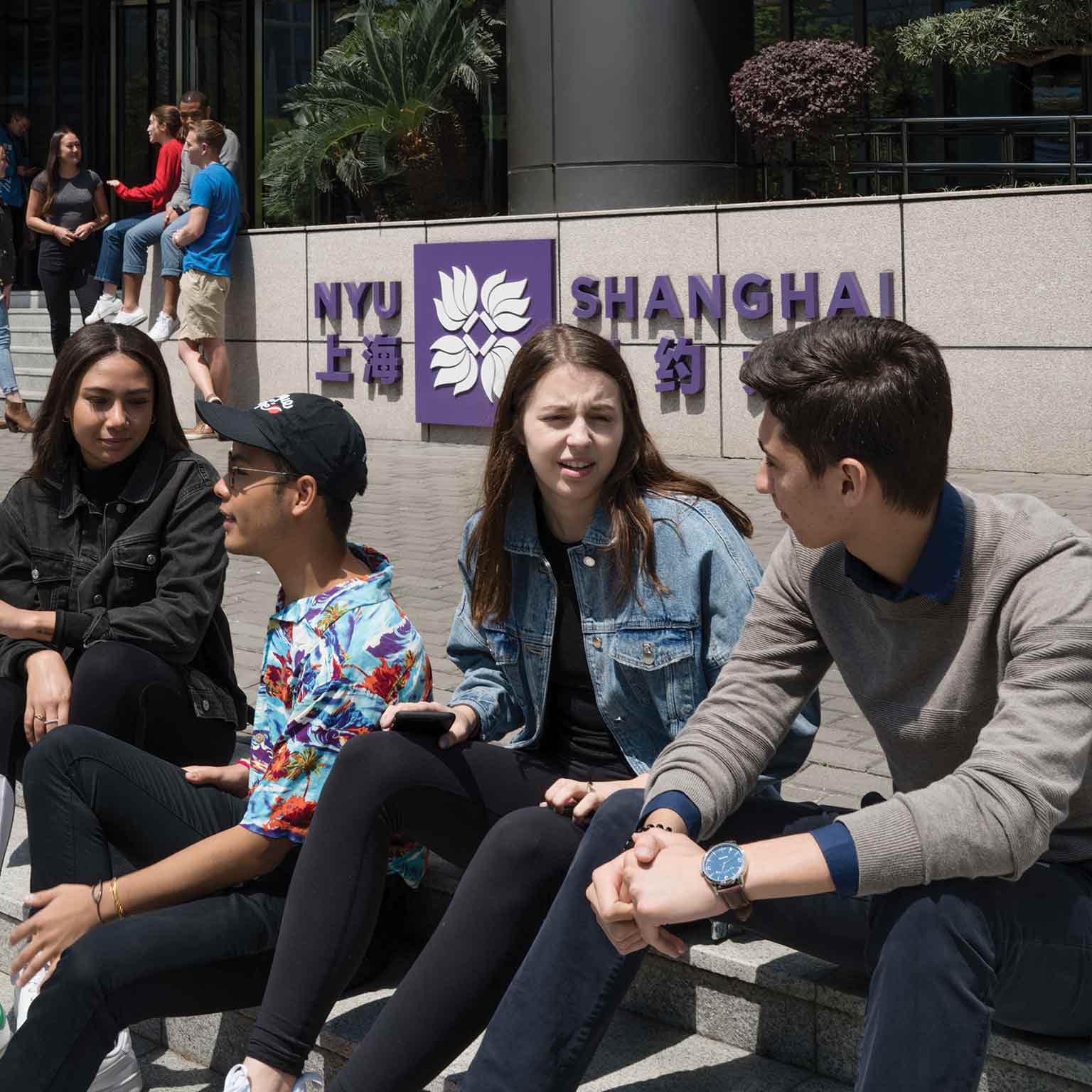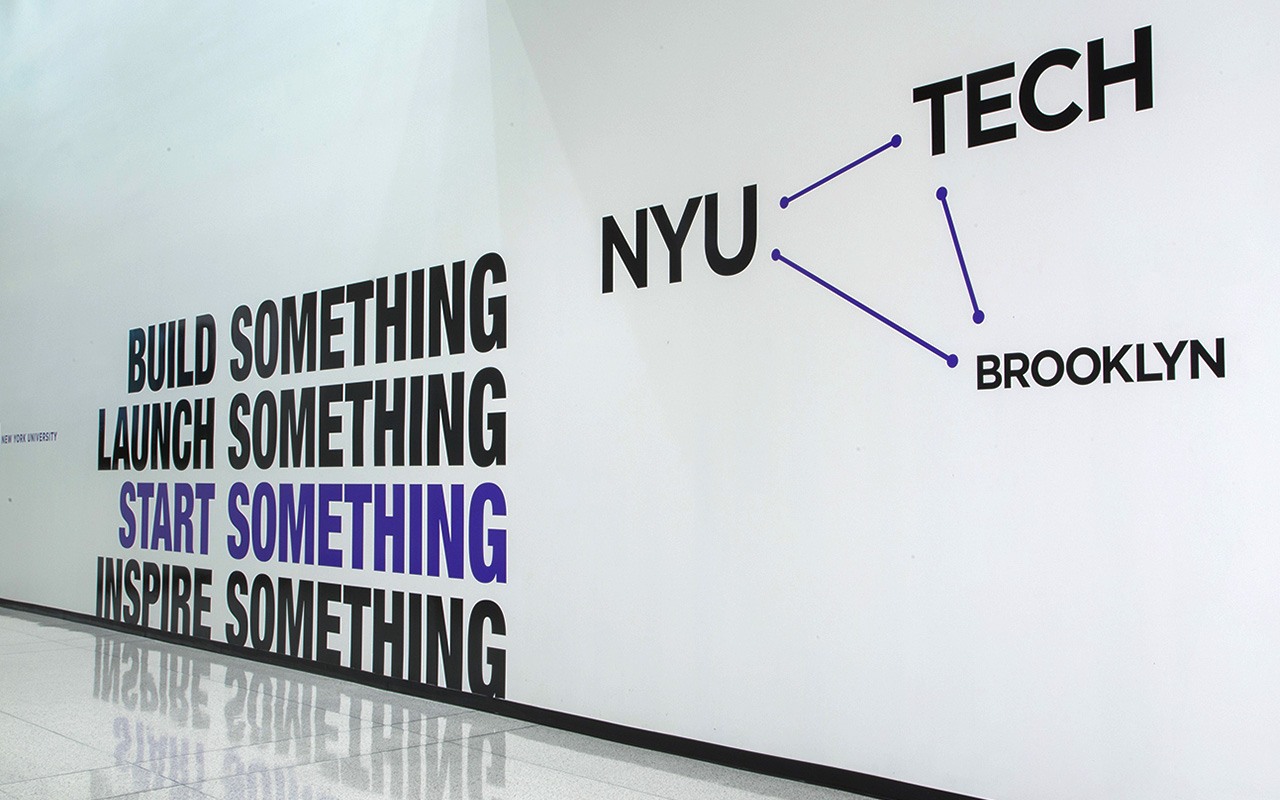With three degree-granting campuses and 12 academic centers and programs across the globe, NYU prepares students for an increasingly interconnected world. The key? Building interdisciplinary knowledge. Thatʼs where two NYU Shanghai majors come in: Interactive Media Arts (IMA) and Interactive Media and Business (IMB). Each one fosters creativity and collaboration by exploring the role of emerging media in our daily lives and beyond.

IMA/IMB: Differences and Applications
A decade ago, NYU Shanghai staff developed the IMA major with a goal of exploring creative uses for communication technologies. In 2013, they launched the major with just a handful of students. Today, over 400 students major in IMA. Then, a few years ago, faculty noticed that many students were double-majoring in IMA and Business. To make the process easier, they created the IMB major, which requires core business classes. “We created IMB to meet a practical need. But there’s also a natural synergy between the two areas,” explains Professor Christian Grewell, associate director and faculty mentor for IMA and IMB.
For those wondering if IMA or IMB is right for them, Professor Grewell says, “With lower computing costs and increased internet access, we’re seeing continued growth in applications of emerging media (read: technology). This is fueling demand for those with a new type of mind- and skill set. Businesses want people who are comfortable with change and with new applications of technology. Most importantly, they want people who can build tangible manifestations of their ideas throughout their lifetime. Both IMA and IMB prioritize fostering these qualities. And COVID has only accelerated the growth and importance of media, technology, and design.”

IMA and the Art of Data Visualization
While some see code as an endless string of numbers and letters, Cecilia Cai sees it as a form of artistic expression. As a first-year student, she planned to major in Computer Science. However, after taking an IMA elective in her first semester, she changed course. “I love the idea that digital technology doesn’t have to be all algorithms or hardware systems. It can also be a tool for creating art and solving problems. As an IMA and Data Science double major, I particularly love to create data visualizations. They allow me to find insights from data in an artistic way. In IMA, there are so many possibilities,” she says.
Over the past three years, Cecilia has designed data visualizations, built interactive websites, programmed web apps, and directed a video storybook. “There’s a culture of creation in IMA, and it’s never linear,” she shares. “People learn by experimenting, and they experiment by doing. And my IMA and IMB friends all have such different areas of focus. For example, I have peers doing animation, product management, 3-D modeling, augmented and virtual reality, and photo editing.” Looking to the future, Cecilia has already applied for a master’s program in Management Science and Engineering. It will combine her engineering and design skills from IMA with the analytical mind-set she developed through Data Science. After that, she plans to apply her diverse skill set as a product manager in education technology.

IMB and the Business of Problem-Solving
When Erdembileg Chin-Erdene arrived at NYU Shanghai, he was awed by the city and its culture. While navigating the bright lights of the central business district, he used apps like WeChat and Alipay daily. Soon, his plan to major in Business and Finance felt limiting. Erdembileg decided to “blend a business mind-set with a tech background to seek human-centered solutions. I realized that my interests lie in creating solutions to real-life problems using technology,” he explains. “Plus, Shanghai was the perfect environment in which to pursue a major like IMB. There’s inspiration everywhere for new products and ideas.”
According to Erdembileg, every IMB course is a “safe space for new ideas” in which students have room to explore while gaining hands-on experience. For example, in Applications Lab, an IMB foundation course, he learned to use a variety of programs to render models and develop products. At the same time, Negotiation and Consensus Building taught him the vital art of negotiation. This included a field trip to a local market, where students competed to see who could get the best value for 20 yuan (about $3). Next semester, he’ll bring everything together in his Capstone Project on teaching K–12 students financial literacy through information and communications technology. “After gaining experience as a product manager or user experience designer, I want to use technology to develop my home country of Mongolia,” Erdembileg concludes. “Overall, I’m extremely grateful for this community and what it has given to me.”



